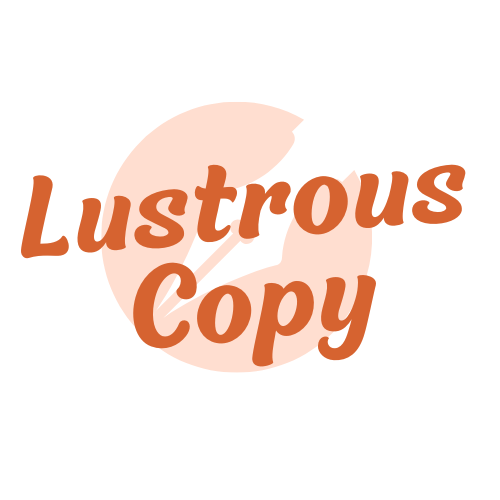Homepage vs. Landing Page vs. Sales Page: This blog post is here to clarify the distinctions between these three important web pages!
If you’re here, chances are you’ve dipped your toes into the vast ocean of the internet and realized the importance of having a website for your venture.
Bravo!
But hold on a sec, have you ever wondered what makes up a website? Well, you’re about to find out!
In the digital world, websites are like little universes and they consist of various pages like homepage, landing pages, sales pages, etc. Each playing a unique role.
You might wonder, “Aren’t they just pages on a site?”
You’re right – they are indeed parts of a website, but they each have unique functions.
In this blog, we’ll dive deep into the differences between homepages, landing pages, and sales pages. We’ll demystify their purposes, understand how they function, and most importantly, learn how to choose the right pages for your own website.
Homepage
1. What Is a Homepage?
Picture yourself stepping into a brand-new house, all excited to explore. What’s the first thing you encounter when you open the door? It’s the entryway or the foyer, right? Well, a homepage of a website is just like that in the digital world.
In simple words, a homepage is the first space you step into when you visit a website.
The homepage is where you take your first steps into the website, and it’s the perfect place to get a quick overview of what this house (or website) is offering.
2. What Is the Purpose of a Homepage?
The homepage’s main task is to greet visitors warmly and make a positive first impression. It’s like the welcome mat that invites people in and sets the tone for their experience on your site.
This will tell visitors what a website is all about. It communicates the primary goal of your business in a clear and straightforward way. People should instantly know what that business offers and what makes it special.
Just like exploring a new house and wanting to see all its rooms, a homepage sparks that curiosity. It’s like a teaser, giving visitors a taste of what’s to come if they venture further into your website.
3. What’s on a Homepage?
A homepage will combine different elements to captivate visitors. Here’s what you’ll typically find in a homepage:
- Headline and Sub-headline: The headline and subheadline grab visitors’ attention and tell them what your website is all about. It’s the first thing they see, so it should be clear, engaging, and instantly convey your main message.
- What Business Offers: It explains products or services in a way that addresses people needs and offers solutions to their problems.
- Social Proof: Testimonials, reviews, and trust badges are like little nods from happy customers that build trust and credibility, encouraging visitors to feel confident about what a business is offering.
- Call-to-Action (CTA): A strong CTA is like a friendly signpost, guiding visitors to the next step. Whether it’s making a purchase or getting in touch for services, the CTA should be crystal clear.
Related: 10 Must-Have Elements For A Stellar Website Homepage
Pixelgrade incorporates all the essential elements for their website homepage. Their headline and sub-headline convey a clear message about what they do, leaving no room for confusion.
They demonstrate a genuine commitment to customer success, treating clients as partners rather than mere customers. The user-friendly communication system accessible through the WordPress Dashboard enhances the overall customer experience.
To build trust, Pixelgrade leverages social proof effectively, showcasing customer testimonials that attest to their credibility.
Additionally, their strong call-to-action ensures that visitors are guided towards taking the next step with ease.
4. How Long Should a Homepage Be?
A homepage can vary in length, typically falling within 200 to 1000 words. Think of it like choosing the right ingredients for a delicious dish – you have some room to play with.
It would be ideal for SEO if a homepage has at least 300 words. Search engines like Google love informative content, and having enough text gives them something to work with.
Landing page
1. What Is a Landing Page?
If the homepage is like the welcoming entryway, then a landing page is one of the exciting rooms you encounter along the way.
It could be the kitchen, a cozy bedroom, a refreshing bathroom, or a lively living room – each designed with a specific purpose.
In a website, a landing page is a standalone web page created for a special mission – a marketing or advertising campaign.
For example, when you click on a link in an email or ads from Google, Facebook, Instagram, TikTok, or similar places on the web, this is where you “land,” and take action. You can either sign up for their email list, download something for free, or even make a purchase.
2. What Is the Purpose of a Landing Page?
Imagine a website as a house with various rooms, each serving a specific purpose – a kitchen for cooking, a bedroom for sleeping, or a bathroom for taking a shower. In this digital home, a landing page is just like one of these specialized rooms.
The main purpose of a landing page is to motivate people to take action, primarily focused on generating leads or driving sales. This is achieved by presenting a special offer, providing valuable information, or enticing visitors with an attractive proposition in return for their contact details.
Let’s say you run an ad on social media, search engines, or other platforms. To make the most of it, the smart move is to link that ad to a specific landing page, not your website homepage.
Why? Because people aren’t always patient. If visitors have to land on your homepage and then search for what your ad promised, they might lose interest and leave. Instead, direct them straight to a landing page that provides the answers they seek. This boosts your chances of making a sale and keeps potential customers engaged.
3. What’s on a Landing Page?
Just like different rooms have specific features to serve their purposes, a landing page is no different. In essence, a landing page includes four key elements:
- Headline: The headline is like a magnet, grabbing visitors’ attention right from the start.
- Lead Form: The lead form is the heart of the landing page, capturing valuable information from visitors.
- Copy: The copy is tailor-made for the landing page’s specific purpose.
- Call-to-Action: The call-to-action leads visitors to the desired action – whether it’s signing up, making a purchase, or downloading something valuable.
Here are some common types of landing pages: - Squeeze Page: This type of landing page focuses on capturing the user’s email address. It’s perfect for enticing visitors to trade their email for something valuable like ebooks, white papers, or newsletters.
Brian Dean from Backlinko uses authority elements on his homepage, designed like a squeeze page, to collect more email signups.
- Splash Page: Unlike other landing pages, the splash page is not primarily aimed at conversion. Instead, it fulfills a specific goal, like making an announcement for a conference, event, or promotion.
Wine club Glassful utilized a lightweight splash page to celebrate its first birthday party, offering all the event details without any fuss.
- Thank You Page: After a customer fills a form or makes a purchase, the thank you page expresses gratitude and suggests additional offers, products, or services to the visitor.
- Coming Soon Page: A coming soon landing page gives a sneak peek of the exciting things in the works, without revealing everything just yet.
4. How Long Should a Landing Page Be?
The ideal length of a landing page depends on its purpose. Some landing pages work wonders with a concise approach.
Short landing pages, consisting of 100-200 words. They’re perfect for grabbing attention, making a quick pitch, and prompting visitors to take action without overwhelming them.
Longer landing pages, reaching up to 1000 words, offer ample opportunities to showcase convincing writing.
These pages can include in-depth descriptions of what’s offered, details about guarantees, social proof, FAQs, and so much more. They allow businesses to build a compelling case and address potential concerns.
Sales Page
1. What Is a Sales Page?
A sales page is like a special type of landing page, specifically designed to showcase and sell products or services. It uses compelling copy, captivating visuals, and persuasive elements to convince visitors to make a purchase.
2. What Is the Purpose of a Sales Page?
The purpose of a sales page is all about selling a product or a service.
When you’re in the market for something, you want to know all about that product or service before making a decision. That’s precisely where a sales page comes into play.
The beauty of a sales page lies in its singular focus on driving sales. Unlike other pages on a website, which may serve various purposes, the sales page has one job – to close the deal.
3. What’s on a Sales Page?
Here’s what you’ll typically find on a sales page:
- Headline and Sub-headline: The sales page starts with a bang, capturing visitors’ attention and telling them what that page’s selling.
- Price: The sales page reveals the price of the offer upfront. Transparency is key, as customers appreciate knowing what to expect before diving deeper.
- Customers’ Problems: A great sales page speaks directly to the customers’ pain points.
- Solution: The sales page showcases offer’s features and highlights how it provides the perfect solution to customers’ problems.
- Proof That Offer Actually Works: Customers want to know that the offer delivers on its promises. Testimonials, reviews, case studies, and success stories provide proof that that offer is worth their investment.
- Assurance, Such as a 30-Day Money-Back Guarantee: A strong assurance like a money-back guarantee offers customers peace of mind.
4. How Long Should a Sales Page Be?
There are two common types – the long-form sales page and the short-form sales page. Each has its own unique strengths and purposes.
Long-form sales page
- Should be about 5000 words or more.
- Dives deep into customers’ pain points and desires.
- Paints a vivid picture of the dream that people have.
- Addresses objections that may hinder customers from achieving their dreams.
- Showcases all the benefits of the product or service.
The long-form sales page from The Fresh Pressed Olive Oil is a great example of how to grab people’s attention from the very start. They use storytelling in their writing to tell a captivating story that keeps readers interested.
Short-form sales page
- About 100-500 words (can be more).
- Works best when customers are already aware of their problems and seeking solutions.
- Easy to understand and gets straight to the point.
- Popular for e-commerce stores, Amazon, or product pages.
- Makes the buying process much easier and faster.
Wrapping Up
In summary, a homepage is an essential component of every website to introduce a business to visitors. It showcases what that business offers and how they deliver that to their customers.
On the other hand, a landing page is more focused on a specific purpose, guiding visitors to take a particular action. Whether it’s joining your email list, downloading freebies, or exploring your offerings, the landing page is the expert navigator.
Last but not least, a sales page is like a specialized landing page with one vital mission – to sell a product or service.
We hope this blog has been a helpful guide in differentiating these pages and aiding you in making the right choices for your business.




